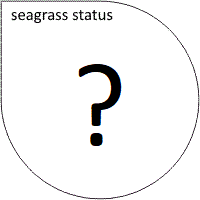Malaysia
Malaysia manages an estimated 11.10 percent (55 MPAs, 4,964.18 km2) of its waters and coastal areas, including 42 marine parks, five fisheries prohibited areas, and seven national marine protected areas.
With 16 species1, seagrass meadows in Malaysia play an important role in supporting coastal marine communities and in maintaining diverse flora and fauna. They are an important component of coastal fisheries productivity and they play an important role in maintaining coastal water quality and clarity.
Seagrass-Watch in Malaysia
To provide an early warning of change, long-term monitoring has been established in Malaysia as part of the Seagrass-Watch, Global Seagrass Observing Network (www.seagrasswatch.org). Establishing a network of monitoring sites in Malaysia provides valuable information on temporal trends in the health status of seagrass meadows in the region and provides a tool for decision-makers in adopting protective measures. It encourages local communities to become involved in seagrass management and protection. Working with both scientists and local stakeholders, this approach is designed to draw attention to the many local anthropogenic impacts on seagrass meadows which degrade coastal ecosystems and decrease their yield of natural resources.
Location
Sepanggor Bay
Monitoring: suspended
Pastl watchers: Marine Club (University Malaysia Sabah)
Location: Teluk Sepanggor, 10 km north of Kota Kinabalu.
Site code: SP1
Issues: Sewage & land runoff
Comments: Site is on sandy sediments. Access to site is by road.

- Only monitored on 2 occasions in 2002/2003.
- Meadows dominated by Halodule spp. and Cymodocea rotundata.
- Insufficient data to describe long-term trends.
- Species differences between sampling events may be an artifact of the Halodule uninervis/pinifolia complex (there is some debate regarding whether the species are in fact separate and the morphological differences may be a consequence of the environment).
The meadow did not appear to show any significant difference between surveys, although more sedimentation was noted in early 2003. - Although current information is limited, anecdotal reports are that the seagrass meadows in Sepanggor Bay are in a fair condition, and no major losses are apparent.
Seagrass cover, species composition
Interactive plots with mouse-over features providing additional detail
Location
Teluk Ambong
Monitoring: suspended
Past watchers: Marine Club (University Malaysia Sabah)
Location: Teluk Ambong, located 50 km north of Kota Kinabalu (Sabah, Borneo)
Site code: TA1, TA2
Issues: Sewage & land runoff
Comments: in proximity to a coastal township. The site consisted of muddy sediments and a mix of Thalassia hemprichii and Enhalus acroides.

- Only monitored on 1 occasion in 2002.
- Insufficient data to describe long-term trends.